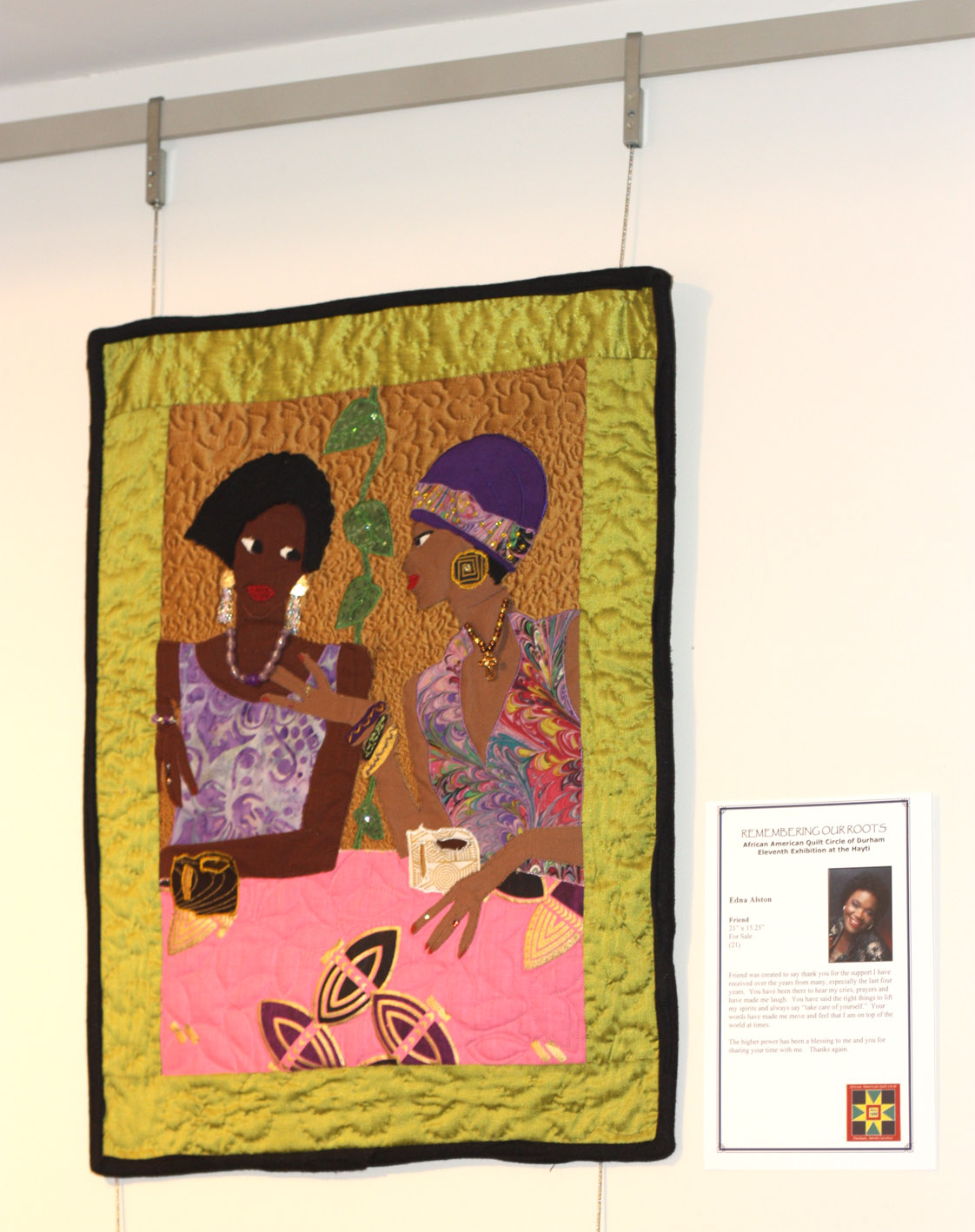Hundreds of quilts are on display until April 3 at the Hayti Heritage Center. The exhibit, “Remembering Our Roots,” coincides with Black History Month and showcases the talent of more than 50 quilters from across North Carolina.
“It is an art form that I am able to give to the people that enjoy looking at my quilts,” said Nancy Cash, who made two quilts for the exhibit. “When I am gone my quilts will still be here.”
The traveling exhibit, which opened Feb. 7, features the work of the African-American Quilt Circle in Durham. The Circle holds an exhibit every 18 months and is making quilts to donate to Genesis Home, a Durham organization that helps homeless families with children.
“They are constantly creating unique and one of a kind quilts,” said Edna Alston, the Quilt Circle’s facilitator. “We show everyone’s expertise.”
The exhibit travels “quite a bit,” said Alston, and has been displayed in Wilmington, Charlotte, Winston-Salem, and Washington, D.C. The exhibit was also featured at Fayetteville State University.
Cash said the exhibit shows the Quilting Circle’s talent.
“Everyone in the group is able to put quilts in the show,” she said. “We create our own patterns, and we learn different techniques and use that on the quilts, it’s never duplicated.”
Cash named one quilt “My Song.”
“I tell people that I quilt because I can’t sing,” she said. “This is my gift from God.”
Her second quilt “Symbols” uses patterns and African symbols to pay homage to African American history.
“Our history in this country is pretty negative,” Cash said. “When we look back to Africa, we try to find what is actually ours, as to what was given to us.”
The exhibit showcases traditional quilting as well as “art quilting,” a modern form of quilting that relies on computers to create patterns. Art quilting may include pictures or poetry instead of traditional shapes and patterns.
“Traditional quilting is when we cut up strips of fabric into different shapes and designs, and it is hand-pieced,” said Ida Couch, another quilter in the group whose work “African Symbols” is part of the exhibit. “Now that we’re into the modern age, we use computers to make patterns.”
One such quilt, named “Haunted by Our Heritage,” shows a man hanging from a noose. The tree sticks out from the quilt when it hangs vertically, allowing the man on the noose to actually hang. That quilt is displayed on the second floor of the exhibit.
The exhibit also features a “Challenge Wall,” which challenged quilters to create works using only a pink fabric and blue fabric of the same material cut 18 by 22 inches.
“It definitely made you think about what is your design going to be,” Couch said. “We all used the same fabric and different colors, but everything was unique.”
Alston said the challenge “took us all out of our box.”
“We are not ‘quilt police,’” she joked. “As African Americans we want our work to look presentable but we don’t stress being perfect because nobody is perfect.”
For the women of the Quilting Circle, the work has a different significance to each of them.
Alston said when she was younger she enjoyed making clothes, but realized one day she did not need so many clothes. She took to quilting.
“It’s soothing, relaxing,” she said, noting that every one of her children and grandchildren own a quilt, including her niece in the Navy. “And I just enjoy it.”
Couch said she has “been sewing since I was a little girl.”
“It shows my heart and I can express myself,” said Couch, who joined the quilting group in 1999. “It is something I can pass down and it’s a creative art for me. I enjoy it.”
After the Hayti exhibit closes, the quilts will be showcased next year during the Durham Blues Festival.
Christopher Moore is a student at NCCU and Staff Writer for The Voice.
WEB LINK: https://www.facebook.com/AAQC.Durham.NC?ref=stream&hc_location=timeline
